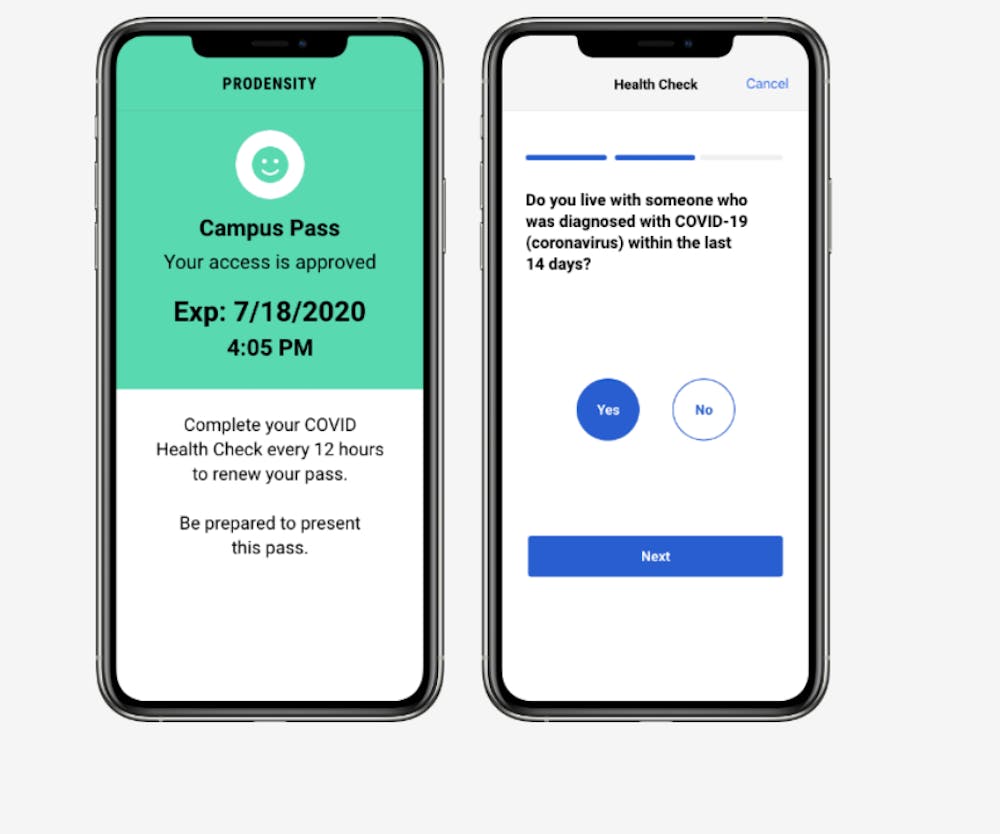The Prodensity app was designed through a collaboration between the Johns Hopkins Technology Innovation Center (TIC); Geraldine Seydoux, the vice dean for basic research at the School of Medicine; and George Economas, the executive director of security for Hopkins Medical Institutions.
The app originally began as a way for labs to keep track of who was using their facilities and when. It has recently expanded to include daily health checks and communication tools.
Development of the app began in mid-April, after all on-campus activities and research were limited to essential activities due to the coronavirus (COVID-19) pandemic. During that time, many of the labs at the School of Medicine realized that they had no method to keep track of who should be let into facilities, creating a logistical nightmare for many researchers and principal investigators (PIs).
When it became clear that the School of Medicine would allow for some increased density on campus, labs submitted plans for safe reopening. Square footage and overall lab layout would determine what the lab capacity would be.
However, Seydoux realized that a method was needed to help labs abide by these new capacity limits. Students and researchers needed a way to know when lab space was open for their use, security needed a way to keep track of who was entering the building for safety purposes and in addition, each lab had an obligation to report back to the University who was entering the building to ensure that COVID-19 capacity restrictions were being followed.
On April 15, Seydoux reached out to TIC inquiring about potential electronic ways to keep track of building occupancy and density requirements. While Seydoux first envisioned a new card swiping system to keep track of building capacity, TIC envisioned a new app being created from scratch, and from there, Prodensity was formed.
In an interview with The News-Letter, Seydoux commented on her experience working with TIC on the app’s development.
“We’d meet twice a week every week over Zoom. I have been able to get a private view of how a group like that develops something from scratch,” she said. “It’s been so inspirational for me to see them work together.”
In the app, users can select the space that they want to go into and see how many lab members are already there and whether capacity in that space is full.
Once arriving on campus, the user scans a QR code that will allow their presence to be known to other lab members through the app. In addition, Prodensity has a communication platform that allows lab members to contact other members directly through the app, in case a shift change is needed.
As of August 26, all individuals reporting to any Hopkins campus are required to complete a daily health check for COVID-19 symptoms via the Prodensity app.
Users are required to fill out a short questionnaire to assess symptoms or other risks of exposures. If the user is free of any symptoms and any potential exposures, they are issued a digital campus pass that permits them to be on campus for up to 12 hours, after which they are required to fill out the questionnaire again. If the user does have any symptoms or potential exposures, they are be denied a campus pass and be instructed to self-isolate and call the Johns Hopkins COVID-19 Call Center.
In the future, the app will also be used to send alerts to users about guidelines and changes in restrictions.
On Seydoux’s end, one of the most difficult parts of creating the app was collecting all the data that were needed for app infrastructure. In order for the check-in system to work, they needed to know the PIs, students and researchers that were a part of the over 600 labs at the School of Medicine. These data were collected in early June, two weeks before labs opened for Phase One of the University’s reopening plan on June 15.
According to Seydoux, the app has created a safe environment for graduate students and researchers in Phase One of lab return. She believes that it will do the same for undergraduates once the University decides to move into Phase Two.
Seudoux encourages users to submit feedback on the Prodensity website to keep the app current with the evolving COVID-19 situation.
“We welcome feedback from users, not only about their app experience and any bugs they may encounter, but also new ideas in which this app can be used,” Seydoux said. “The idea is that this is an app that will continue to evolve as the situation on campus evolves. Things will change, rules will change and the app will be flexible that way.”





